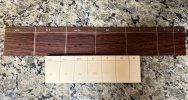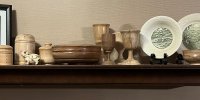- Joined
- Jun 10, 2024
- Messages
- 1,073
I've been hesitant to say this here since I feel like inevitably someone is going to pipe up and say I'm going to give all my steel and leather some kind of hyper corrosion herpes and give myself bleeding eyeball brain butt cancer.
For probably thirty years now I've wiped just about anything down with SC Johnson paste wax. Boots, belts, jackets, holsters, anything leather. Use a hair dryer to really work it into the leather. If I'm putting blued steel in the safe I wipe it down and I've never had rust. So of coarse it's yet another good thing that's been discontinued. I figure once this can runs out I'll have to try another brand like Minwax or similar. No way am I paying the money Ren wax wants for a small jar.
For probably thirty years now I've wiped just about anything down with SC Johnson paste wax. Boots, belts, jackets, holsters, anything leather. Use a hair dryer to really work it into the leather. If I'm putting blued steel in the safe I wipe it down and I've never had rust. So of coarse it's yet another good thing that's been discontinued. I figure once this can runs out I'll have to try another brand like Minwax or similar. No way am I paying the money Ren wax wants for a small jar.


